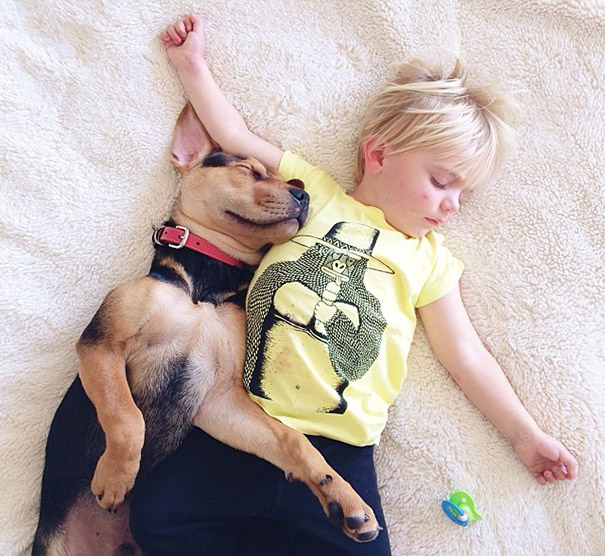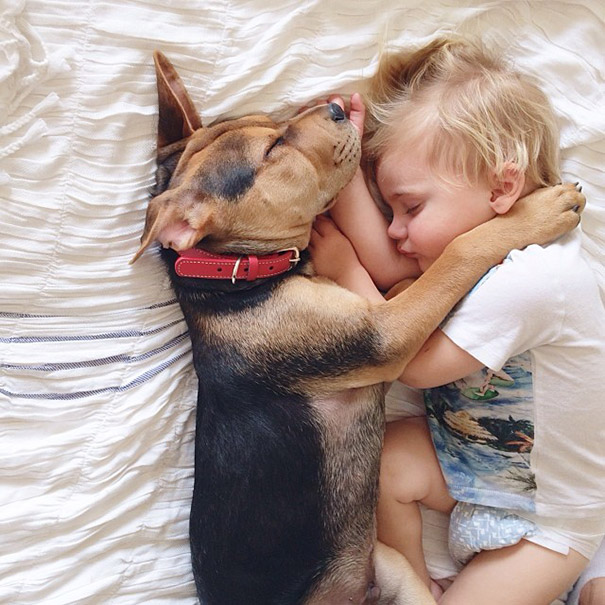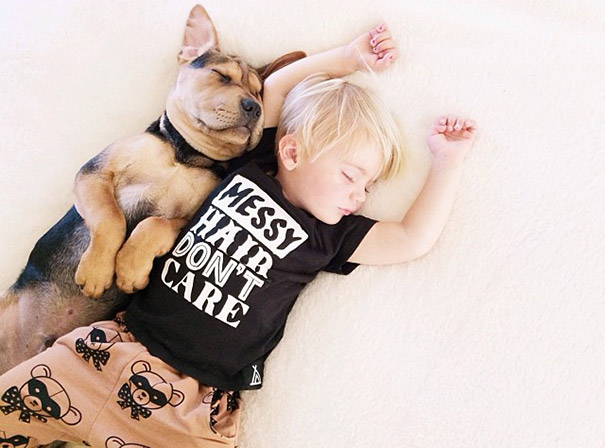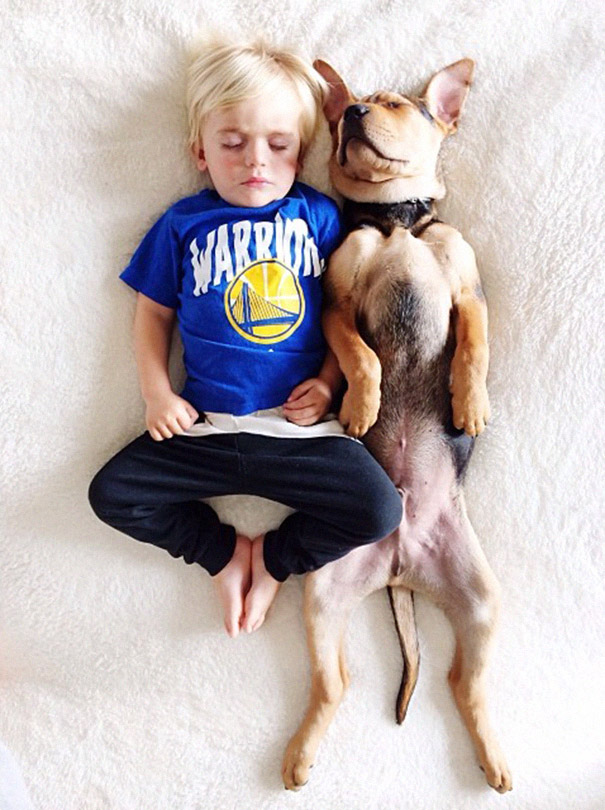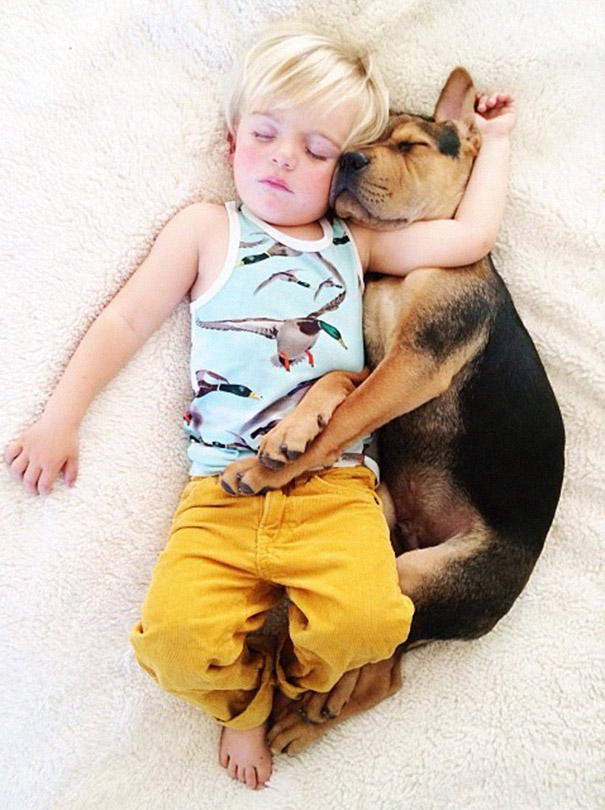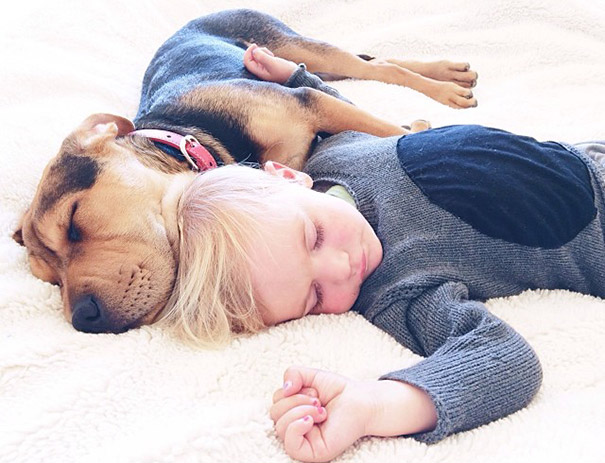View the world through the eyes of Hudson. His objective of this blog is to educate the public by trying to teach them not to buy a dog through a puppy mill. Don't buy a dog before you see where his parents live and how they are treated. Better yet ADOPT through a rescue or shelter and know you've done a good deed by saving a dog's life !!!
Thursday, May 28, 2015
What To Do If You Purchase A Sick Dog From A Dog Breeder .....
I receive many complaints against dog breeders/puppy mills everyday from people asking me to share them on comments. I ask you to kindly put your first name and your last initial on these comments if you would be so kind enough. Also where I appreciate your input on these often times puppy millers kindly use the Bark Alert form on the Department of Agriculture site to report them also. I have all the numbers you can use to let the proper authorities know about your sick puppy. This is so critical for you to report them as the state needs your complaints to follow up on these people. It is SO IMPORTANT for you to take the time to make a report with the following organizations. Thank you so much for letting them know about your complaints. If you are not from Missouri go to your Department of Agriculture page and get in touch with the Humane Society as well as C.A.P.S.
Hudson Hopes His Readers Are Enjoying Their Summer ....
I hope you are all enjoying your summer and God Blesses each and every one of my readers with much LOVE in your life. Keep adopting Dogs/Cats from your local shelters and rescues !!!
Shelter Dog Brighten Our World & Make The Best Pets ........
A family in New York began visiting shelters to look for the perfect pup.After a few weeks of searching local shelters, they found a puppy that they fell in love with – Theo.He craved human friendship and attention. Three days after coming home with them, he joined their son Beau for his daily nap.Beau's mother began taking "nap" pictures and now they are warming hearts around the world.
Wednesday, May 27, 2015
Oklahoma City Police Department Pay Tribute To Fallen K-9 Officer .....
Look closely at the picture on the left and specifically what’s inside that coffin.
That’s not the body of a person
That’s the body of a dog.
That’s not the body of a person
That’s the body of a dog.
Kye was a 3-year-old Belgian German Shepard.
He worked as a K-9 with the Oklahoma City Police Department.
He worked as a K-9 with the Oklahoma City Police Department.
Kye was killed in the line of duty last month.
And was just given a full police burial.
The service included full police honors and a 21-gun salute.
And was just given a full police burial.
The service included full police honors and a 21-gun salute.
Kye worked with Sgt. Ryan Stark.
That’s Sgt. Stark bending over to kiss Kye.
(Honestly just looking at that picture gets me choked up)
That’s Sgt. Stark bending over to kiss Kye.
(Honestly just looking at that picture gets me choked up)
They had been partners and friends for two years.
The second picture is Sgt Stark holding the folded American Flag that had draped Kye’s coffin.
You can see Sgt. Stark wiping away tears.
The second picture is Sgt Stark holding the folded American Flag that had draped Kye’s coffin.
You can see Sgt. Stark wiping away tears.
Kye was chasing a suspect when he was stabbed.
Sgt. Stark then shot and killed the suspect.
Kye died the next day in surgery.
Sgt. Stark then shot and killed the suspect.
Kye died the next day in surgery.
During the eulogy for Kye an officer said:
"Without question, Kye's sacrifice saved the life of one of our officers. We will forever remain in your debt."
"Without question, Kye's sacrifice saved the life of one of our officers. We will forever remain in your debt."
The bond between officers and their K-9’s is amazing to me.
When an officer if paired with a K-9 it is intended to be a lifetime partnership. They trust each other completely.
When an officer if paired with a K-9 it is intended to be a lifetime partnership. They trust each other completely.
I read these quotes from former K-9 officers:
"You spend all those hours training together, working together, in the car together. He's never in a bad mood because he had a fight with his girlfriend."
“They are part of you. If you’re sleeping, they’re probably right next to your bed."
"There is more of a bond there than just being partners. Everyday when I get ready, he gets ready. He sees me getting ready and he knows it. He's excited to get out there to do the job"
"You might have had a bad day at work or a bad day with the family, but as soon as you see that dog, you see that unconditional love.
All of the sudden you just forget about that bad day and think, 'Here's my partner, here's my buddy right here.
No matter what happens, he always loves me.' "
All of the sudden you just forget about that bad day and think, 'Here's my partner, here's my buddy right here.
No matter what happens, he always loves me.' "
Rest in peace Kye.
Tuesday, May 26, 2015
Kansas City Star Reports:Missouri, Kansas dog breeders criticized by animal welfare group
Missouri, Kansas dog breeders criticized by animal welfare group
The Humane Society of the United States said Missouri and Kansas have the most dog breeders on a list the group compiled to identify outfits it says is mistreating animals.
released this week by the animal welfare group the Humane Society of the United States as home to “problem puppy mills.”
Kansas came in second.
The group said Missouri is home to 22 such breeding operations and Kansas has 13.
In 2010, about Missouri voters passed the “Puppy Mill Cruelty Prevention Act” by a 52-48 percent margin that included a limit of 50 breeding dogs per business and put in new safeguard on how those operations were to be regulated.
In spring 2011, the General Assembly negated parts of that referendum with another law brokered by Democratic Gov. Jay Nixon between agriculture and animal welfare groups in the state.
That law, trumpeted by Nixon as a compromise to improve the care of dogs while allowing breeders to stay in business, was criticized by many of the national groups that helped pass the anti-puppy mill referendum.
That voter-backed law set indoor floor space requirements at at least 25 square feet for small dogs, 30 square feet for medium-size dogs and 35 square-feet for large dogs. It was nullified by the Legislature.
Instead, lawmakers doubled Missouri’s previous minimum space requirement in 2012 and called for them to triple the previous standard by January 2016 for existing breeders. Wire flooring will also be banned in 2016. Those rules applied to existing breeders.
New dog-housing facilities now must comply with the tripled space requirements.
While the voter-approved law required at least one yearly exam with prompt treatment for any illness or injury, the superseding law changed that to two annual visual inspections that don’t need to be a hands-on exam. Ultimately, there must be one yearly exam and prompt treatment of a “serious illness or injury.”
Missouri law now also requires dogs to have continuous access to water and access to food at least twice daily. The ballot measure called for food only once daily, but it had tighter restrictions on keeping the water supplied to the animals clean.
The Humane Society cited examples of what it believed was animal abuse at 101 dog breeders across the country.
But it suggested some improvements in animal care.
“The news isn’t all bad,” the report said. “Part of the reason Missouri is high on the list of problem dealers is because state inspectors appear to be documenting problems at substandard kennels more carefully.”
The problems cited at the various dog breeders ranged from using guns to euthanize animals to puppies losing hair or having bad teeth.
Read more here: http://www.kansascity.com/news/article351019/Missouri-Kansas-dog-breeders-criticized-by-animal-welfare-group.html#storylink=cpy
Ask USDA TO Enforce The Animal Welfare Act Once and For All .....
USDA ANNOUNCES IT WILL IGNORE “MINOR” VIOLATIONS
NAMES PUPPY MILL ADVOCATE AS CANINE ADVISOR
PLEASE ASK USDA TO ENFORCE THE ANIMAL WELFARE ACT
In a stunning setback in their efforts to increase enforcement of the Animal Welfare Act (AWA),
USDA has suddenly reversed course and decided to, once again, tolerate substandard
conditions at puppy mills. Dr. Chester Gipson, USDA’s chief of enforcement for the AWA,
recently told animal advocates that the USDA needs “to enable breeders to sell their dogs to
pet stores” and citing violations is an impediment to such sales.
In the past few years, many municipalities have enacted ordinances restricting pet stores to
only purchasing puppies from breeders with no violations on their federal inspection reports.
These ordinances are intended to protect consumers from buying dogs from substandard
puppy mills.
Shockingly, USDA has made the decision to help substandard breeders circumvent these
ordinances and to continue to sell puppies in spite of continuing violations. USDA has
recently instructed their inspectors not to cite breeders for “minor” violations as such
documentation is making it more difficult for breeders to sell their puppies. When questioned
as to their definition of “minor,” or as to how many minor violations of the Animal Welfare Act
will be ignored per facility, and for how long such violations will be tolerated, USDA responded
that it will be left up to the individual inspector and admitted that no guidance has been
provided for the inspectors.
At a recent meeting of dog breeders, USDA officials told breeders that, “if at any time a
violation has the potential of affecting your business, please call our office immediately and let
us know,” emphasizing that USDA stands ready to enable breeders to market their dogs to pet
stores.
In an effort to further aide substandard dog breeders, USDA has hired a long-time puppy mill
lobbyist and advocate, Julian Prager, to be its “Canine Advisor.” Mr. Prager’s duties will include
assisting in the training of USDA inspectors. Ironically, Mr. Prager has consistently opposed all
laws regulating puppy mills and vigorously opposed Pennsylvania’s new puppy mill law, and
most recently, fought against implementation of USDA’s new regulations on puppy mills selling
over the Internet. Mr. Prager also opposed a law to prevent puppy mill operators from
performing surgeries such as C-sections and debarking on their own dogs.
Julian Prager seated with AKC lobbyists.
This year the AKC allocated $10,000 to oppose
Missouri’s new puppy mill regulations.
Yet, this is the individual that USDA has hired to assist in the enforcement of the Animal
Welfare Act, the law which regulates the same industry that Mr. Prager has served to promote
and protect for several decades.
Please contact the Secretary of Agriculture and remind him that the AWA stands for the Animal
Welfare Act and not the Dog Breeders Welfare Act. USDA’s sole focus, as mandated by
Congress, should be on the welfare of the dogs and not the welfare of the substandard
breeders’ businesses regardless of how the neglect of their animals is hurting them financially.
Contact Secretary Tom Vilsack at AgSec@usda.gov, leave a message at (202) 720-3631 or write
him at:
Secretary Tom Vilsack
U. S. Department of Agriculture
Room 200-A
1400 Independence Avenue, SW
Washington, DC 20250
Iowa Needs Improvement With Dog Issues
Serious Animal Welfare Act Violations Do Not Mean Quick Removal Of Dogs From Breeding Facilities
By: JACOB LUPLOW
Dog breeders in Iowa who repeatedly do not comply with the Animal Welfare Act are allowed to continue raising and breeding dogs – sometimes in horrible conditions – while federal inspectors give the cited breeders time to correct violations.
An IowaWatch review of inspection reports revealed that it often takes multiple U.S. Department of Agriculture Animal and Plant Health Inspection Service noncompliance citations, issued for problems posing the most serious risk to an animal’s health during inspections, before the agency decides to enforce against the facilities it has identified as substandard.

USDA photo by John Lies
This photo shows “Okie” (left), “Jenny” (middle) and “Foot” (right) at Debra Pratt's dog breeding facility near New Sharon, Iowa, during a March 26, 2013, USDA Animal and Plant Health Inspection Service inspection.
Animal rights activists say this is happening beyond Iowa, as well.
“Even when the USDA does go out and writes people up, there is just no enforcement effort to put these people out of business,” Bob Baker, a nationally recognized animal rights expert and executive director of the Missouri Alliance for Animal Legislation, said.
The reason is due process. At the federal level, animals may remain in these conditions because the Animal Welfare Act, enacted to protect animal health, requires that the USDA give facility operators time to make corrections before enforcement action is taken, USDA spokeswoman Tanya Espinosa said.
Iowa law allows for confiscating animals at the state level but only at the end of legal proceedings. “They have legal rights and we have to get through the process, you know, before any confiscation could occur,” Dustin VandeHoef, spokesman for the Iowa Department of Agriculture and Land Stewardship, said about breeders under investigation by state inspectors.
Federal inspectors say they have increased their inspections at dog breeding facilities after the Office of Inspector General issued a scathing 2010 review on the Animal and Plant Health Inspection Service, known by its initials APHIS.
But cases continued to exist in Iowa in which dogs lived in unclean or unsafe conditions while breeders got multiple chances to correct problems inspectors found, documents IowaWatch reviewed and interviews revealed.
One of the most notorious recent examples is the case of Debra Pratt. Her facility, in the New Sharon area in central Iowa, became known as The Pratt Mill before it effectively was shut down.

USDA photo by Jeff Baker
A female, black miniature schnauzer photographed during a March 26, 2013, inspection of the Debra Pratt dog breeding facility. The dog suffered what USDA inspectors called a significant amount of hair loss on her back.
From Aug. 10, 2010, until June 21, 2013, inspection reports indicate Pratt operated a facility that consistently housed dogs in dangerous conditions, despite being cited for violations during that time and being given time to correct them.
Other examples in USDA inspection reports IowaWatch examined during a four-month investigation include:
- Julie and Carolyn Arends, whose Julies Jules near Jewell consistently had substandard conditions for animal health from 2010 into 2013.
- Gary Felts, of Kingsley, who four months after being cited Nov. 19, 2013, for having rusted surfaces, dirt and grime in facilities that housed animals was cited for the same substandard conditions on March 26, 2014, all while not having adequate records of the dogs on hand.
- Karen Baker, of Redding, who from February 2011 to October 2012 was allowed to operate a facility that USDA inspectors continually cited for unsanitary conditions that included a buildup of dog and rodent feces. APHIS records through June 3, 2014, showed Baker’s facility remained in what was rated semi-poor conditions. She had consistent indirect noncompliance issues, reports show, but has not been cited for direct noncompliance issues.
Iowa has 249 USDA Animal Care Breeder/Dealer licensed facilities and most have good inspection records.
VandeHoef said state agriculture and land stewardship officials work with local sheriffs and county attorneys when trying to determine how to handle breeders who do not have good inspection records. They seek legal action against breeders suspected of violating the law and work with animal shelters and human societies to house confiscated animals, he said.
CONSTANT CARE REQUIRED
In early 2013 David and Joane Cline, of Sully, were cited for having animals with dental problems and skin matting two months after being cited in December 2012 for the same problem again, except this time more animals had health problems, inspectors said.
Conditions at the Clines' facility improved to the point where they had no violations in a November 2013 inspection, nine months after the previous inspection. But a June 2013 inspection was scratched because no legal adult was available to assist, records show.
Joane Cline told IowaWatch she and her husband take care of their dogs and the dogs’ health.
“We keep the veterinarian documentation for the inspector, but the inspectors don’t pay any attention to that. They just tell us to do as good as we can,” she said. “It’s not cheap to have your dogs’ teeth cleaned and pulled.”
The Clines have a small outfit, with around 23 dogs this past summer, she said. They enjoy being with the dogs, which are housed in a dairy barn, she said.
“We clean our facility as good as we can with it being a dairy barn,” she said. “In the summer time, they have personal fans, but it’s not air conditioned. And we do have the doors open all the way around. … And then in the wintertime we put straw in and we close the barn doors and leave the lights on. If it gets too cold we put blankets in front of them.”
Rodnie Kelley, of Kellerton in southern Iowa, saw his share of APHIS inspectors last year. An August 2013 inspection at his facility turned up two violations – an exposed live wire about an inch from the top of an enclosure where two cats were living and clutter in a hallway leading to the dog kennel.
At the start of the year, in January 2013, he had been cited for hair, urine and feces that built up in animal enclosures; for having one dog with dental problems; and two dogs with matted hair. He took care of those problems by the next day, a follow-up inspection report states.
“You just have to keep everything up to snuff,” Kelley said in an IowaWatch interview.
In May 2013, Kelley was cited for having two dogs with dental problems and two cats at his facility had eye infections.
Kelly said the inspectors do a lot of good. However, “some of them don’t actually know what they are doing,” he said.
“Some of the younger ones, I mean, like: there was a kitten that had a sore eye. And kittens get sore eyes a lot of time. And you just have to doctor them and they clear up. And one young guy (inspector) asked me if I had taken it to the vet. And if I had, the vet would have looked at me like, ‘what the hell are you doing here?’ Just things like that.”
Kelley said he had 15 dogs this past summer. “You don’t get rich,” he said. “It’s something I have done my whole life.”
CLOSING THE PRATT MILL

USDA photos by (above) John Lies and (below) Heather Cole
(Above) A female English bulldog named Gracie with eye problems during a Feb. 14, 2013, USDA inspection of Debra Pratt's dog breeding facility. (Below) Gracie's right eye still was red and swollen with discharge during a follow-up inspection on March 26, 2013.
Debra Pratt has become a poster child for the kind of animal neglect that coins the phrase “puppy mill”. In her case, the phrase evolved into “The Pratt Mill”.
From Aug. 10, 2010, to June 21, 2013, inspection reports IowaWatch reviewed show, Pratt operated a facility that consistently housed dogs in dangerous conditions. For example, on Aug. 10, 2010, APHIS inspector John Lies noted on a report no fewer than 10 bulldogs that had the disorder cherry eyes.  On Feb. 1, 2012, Lies noted frayed wires in the dogs’ enclosures that presented sharp edges on which the dogs could cut themselves.
On Feb. 1, 2012, Lies noted frayed wires in the dogs’ enclosures that presented sharp edges on which the dogs could cut themselves.
 On Feb. 1, 2012, Lies noted frayed wires in the dogs’ enclosures that presented sharp edges on which the dogs could cut themselves.
On Feb. 1, 2012, Lies noted frayed wires in the dogs’ enclosures that presented sharp edges on which the dogs could cut themselves.
Pratt’s operation was one of several of concern for Mary LaHay, director of Iowa Voters for Companion Animals.
“Debra Pratt showed up on my radar almost immediately because her inspection reports from the get-go were starting out bad,” LaHay said.
“If you look at her history, it is just amazing how often she was cited. And the problem is that the USDA gives these folks so many chances,” LaHay said. "It's like the clock completely resets. It’s like none of those previous things ever happened.”
Pratt continued operating her facility with a steady number of noncompliance issues until an April 3, 2013, inspection, when conditions became worse. Lies wrote that more than three dozen dogs in Pratt’s care were receiving necessary veterinary care, although the report does not state from whom the dogs were receiving that care.
One of these dogs was an English bulldog with a marble sized mass on the inside corner of the right eye. Another of the dogs, a male poodle, had lesions on his feet that were ¼-inch in diameter. These were cited as repeat direct noncompliance issues because dogs in her care had been found in previous inspections in egregious conditions.

USDA photo taken by Jeff Baker
A female shih tzu has hair around the face that is rope-like, twisted and falling into the dog's face during a March 26, 2013, inspection of Debra Pratt's dog breeding facility.
The Iowa Department of Agriculture and Land Stewardship performed joint inspections with APHIS and started to pursue, with the Iowa Attorney General’s office help, the revocation of her permit and civil penalties. The department reached a settlement agreement with her on June 21, 2013, to revoke her permit.
Pratt was cited by APHIS for 51 noncompliance issues in the year and a half that started Feb. 1, 2012, records IowaWatch examined show. Of those, 19 were repeat noncompliance issues, and more than three dozen dogs in her care had health conditions that demanded veterinary care.
The state fined Pratt $7,800. IowaWatch attempted to reach Pratt for comment, including via certified mail, but received no response.
Kathleen Summers, the Humane Society of the United States’ outreach and research director, classified Pratt’s operation as one of Iowa’s worst in a report titled “A Horrible Hundred: 100 Problem Puppy Mills.” She sees a bigger problem with how federal inspectors handle these particular facilities.
“These people are getting chance after chance after chance,” Summers said.
“The problem is they (animal inspectors) are relying mainly on these once-per-year inspections, and sometimes the USDA doesn’t even inspect once per year. Sometimes they go out and the breeder isn’t home or he or she pretends not to be home. And then the USDA goes away and doesn’t come back for a year.”
READ HOW THINGS GOT OUT OF HAND AT ONE IOWA DOG BREEDER INSPECTION VISIT
THE WORST ANIMALS ENDURE
An Office of Inspector General 2010 audit report of the Animal and Plant Health Inspection Service criticized the agency for choosing up to that time to take little or no enforcement action against violators. Another criticism in the report was that APHIS had little effect gaining dealer and breeder compliance because it focused heavily on educating breeders about the Animal Welfare Act, at the expense of inspections and enforcement.
APHIS wrote an action plan after the audit that includes shifting the focus from education for problematic dealers to enforcement.
The number of APHIS inspections nationally increased from 1,516 in fiscal 2010 to 2,606 the following year, according to USDA data IowaWatch obtained with a Freedom of Information Act request. They since have gone down, to 2,156 in fiscal 2012 and 1,882 in fiscal 2013, the last year for which complete data were available.
Espinosa, the USDA spokeswoman, wrote in an email that some states now enact and inspect for their own regulations. Moreover, inspections may be higher in one year than they are in another because of mandatory re-inspections in a given year, she wrote.
Espinosa wrote that USDA officials have taken several steps to address concerns in the critical 2010 report. They have created standard procedures, increased internal communications, provided frequent training for inspectors and their supervisors, created a compliance unit and changed how inspectors pursue enforcement actions, among other changes, she wrote.
Moreover, she wrote, the USDA issues monthly press releases about violators, has hired a kennel specialist, provides inspection information with state inspectors, and created an Animal Health and Welfare branch.
An IowaWatch analysis of APHIS inspection data, from a public database on its website and covering Sept. 27, 2010, through May 30, 2014, revealed that 7 percent of dog breeding facility inspections during that time resulted in direct noncompliance citations. Of those, relatively few breeders’ USDA licenses were suspended, revoked or terminated, and few were fined for not complying with the Animal Welfare Act.

USDA photo by John Lies
USDA Animal and Plant Health Inspection Service complaints about Debra Pratt's dog breeding facility included clutter and junk around the dog enclosure, and having no shelter for animals. Photo taken during March 26, 2013, inspection.
During that time APHIS inspected 6,840 USDA-licensed dog breeding facilities and cited 483 direct noncompliance issues that pose the most serious risk to the animal’s health. Only 24 breeders were cited for having four or more direct noncompliance issues. APHIS brought enforcement decisions on 16 USDA licensed dog breeders.
Three of those 16 are from the Humane Society of the United States’ 2013 and 2014 catalogues of the worst puppy mills in Iowa: those run by Pratt, the Arendses and Felts.
Baker, of the Missouri Alliance for Animal Legislation, said that after more than 30 years of educating breeders with no avail, the USDA has to change something.
“Even when the USDA does go out and writes people up, there is just no enforcement effort to put these people out of business,” Baker said in an IowaWatch interview.
Gil H. Harden, assistant inspector general for the 2010 USDA audit, wrote that the APHIS Animal Care Unit’s enforcement process was ineffective in gaining breeder compliance with the Animal Welfare Act because agency leaders wrongly believed educating breeders on the law would promote compliance.
Moreover, the agency chose to take little or no enforcement action against violators, the report noted.
APHIS wrote an action plan after the 2010 report that includes shifting the focus from education for problematic dealers to enforcement.
Espinosa, the APHIS media relations contact, said in an interview that inspection protocol gives breeders multiple chances to fix husbandry practices for which a noncompliance issue has been cited.
She said inspectors who identify noncompliance issues give breeders a window of time in which the issue must be fixed. If the issue still exists when the inspector returns, the inspector writes it up as a repeat noncompliance issue and gives the breeder another time frame in which it must be completed.
APHIS steps after that may include opening an investigation. When determining that next step, the agency takes into account the seriousness of the noncompliance issues and the extent to which the breeder has or has not been in noncompliance with the Animal Welfare Act, she said.
Summers, at the Humane Society of the United States, does not question APHIS’s shift toward more inspections. But, she said, she is concerned about the time APHIS takes to enforce action against breeders the Humane Society has identified as operating a substandard dog breeding facility.
Summers said more prompt inspections are needed. Even when a case appears before APHIS’ Investigation Enforcement Service, that branch usually has a backed-up caseload and short staff to deal with situations promptly. Meanwhile, dogs suffer.
“If you, as a dog owner, kept your dog in a cage 24/7 and he was under weight and his ribs were showing, and your neighbor called animal control, they very well could go out there and say, ‘Hey, do you have any medical records that show you have been treating your dog for whatever condition is affecting him?’” Summers said. “And if you didn’t have medical records showing that the dog has a verified condition that you have been treating, then they could confiscate your dog.
“But dogs in puppy mills don’t seem to have the same protection.”
Lyle Muller of IowaWatch contributed to this report.
The Telegraph Herald (Dubuque), The Gazette (Cedar Rapids, IA), The Hawk Eye (Burlington, IA), Mason City Globe-Gazette and The Courier (Waterloo-Cedar Falls) published all or portions of this report under IowaWatch's mission of making its stories available for republication. Please support our nonprofit journalism with a tax deductible donation at this link.
Cruel Dog Bunchers Hopefully A Thing Of The Past
CRUEL DOG BUNCHERS HOPEFULLY A THING OF THE PAST
The National Institutes of Health (NIH) has recently announced that it will no longer fund
research on dogs procured from pounds, breeders, and other so-called random sources. The move
is in response to a National Academy of Sciences report, which concluded that dogs acquired
from such places were not critical for biomedical research, and that using them could damage the
reputation of the research enterprise with the public.
For years, Class B dealers or “bunchers” as they are known in the trade, sold animals to research institutions that they obtained from dog pounds, trade day sales, dog auctions, and smaller dog dealers. This system of obtaining dogs for research was often plagued with abuse and even stolen dogs.
For years, Class B dealers or “bunchers” as they are known in the trade, sold animals to research institutions that they obtained from dog pounds, trade day sales, dog auctions, and smaller dog dealers. This system of obtaining dogs for research was often plagued with abuse and even stolen dogs.
Missouri has a long, sordid history of dog dealing and for many years was one of the major
sources of dogs acquired by bunchers to be re-sold to research. The state was rife with dog
auctions and dog swaps where shady characters would trade dogs for nefarious purposes. The
most notorious site in Missouri for dog bunchers was the infamous “Rutledge” dog auction and
trade day sale located in Scotland County in Northeast Missouri. Dog bunchers from across the
country came to Rutledge to pick up “cheap” dogs to re-sell to research laboratories. One of the
most infamous bunchers was Sam Esposito who traveled from Pennsylvania in a tractor trailer
and would load up over 300 dogs from Missouri and would truck them to some of the most
prestigious research laboratories on the East Coast.
Esposito and other bunchers frequently violated the law by acquiring animals from fraudulent sources and abusing and neglecting their animals. One buncher investigated by our Executive Director, Bob Baker, was found to be housing his dogs with no food or water. This particular buncher attempted to re-sell his dogs within 3 – 5 days of acquiring them and therefore refused to waste feed on them. Those that didn’t sell starved to death. Baker discovered skeletons of dogs chained to dog houses.
Esposito and other bunchers frequently violated the law by acquiring animals from fraudulent sources and abusing and neglecting their animals. One buncher investigated by our Executive Director, Bob Baker, was found to be housing his dogs with no food or water. This particular buncher attempted to re-sell his dogs within 3 – 5 days of acquiring them and therefore refused to waste feed on them. Those that didn’t sell starved to death. Baker discovered skeletons of dogs chained to dog houses.
Many of the animals obtained by bunchers were often stolen pets, strays or animals obtained
under false pretenses and deception through “free to good home” ads.
Fortunately, due to the passage of a state law in Missouri making it a felony to steal a dog along with stricter regulations by the U. S. Department of Agriculture, there are no longer any bunchers actively operating in Missouri and only a handful left nationwide.
Fortunately, due to the passage of a state law in Missouri making it a felony to steal a dog along with stricter regulations by the U. S. Department of Agriculture, there are no longer any bunchers actively operating in Missouri and only a handful left nationwide.
Hopefully, NIH’s new policy of refusing to fund the procurement of dogs from Class B dealers
will reduce that number of bunchers to zero nationwide.
Random source dogs and cats can still be used by researchers and educators who don’t rely on government money. This is the reason that Congress needs to pass the Pet Safety and Protection Act, which would effectively outlaw the use of all random source dogs and cats in the United States. In the meantime, tougher regulations have shrunk the number of Class B dealers from about 200 in the 1970s to just a handful today, with none in Missouri.
This article was written by MAAL who is a Fantastic organization in Missouri !!!
Random source dogs and cats can still be used by researchers and educators who don’t rely on government money. This is the reason that Congress needs to pass the Pet Safety and Protection Act, which would effectively outlaw the use of all random source dogs and cats in the United States. In the meantime, tougher regulations have shrunk the number of Class B dealers from about 200 in the 1970s to just a handful today, with none in Missouri.
This article was written by MAAL who is a Fantastic organization in Missouri !!!
Missouri Needs To Get A Grip On Its Dog Industry/ Dog Breeders Bring Revenue To Missouri
Apr 29, 2015 10:09 PM by Katie Hynes, KOMU 8 Reporter
COLUMBIA - A new study released by the University of Missouri found dog breeding brought in more than $58 million in 2013. Yes you READ that right that is WHY MY FRIENDS Dogs are abused because of the BIG MONEY involved in this industry that has gone on for years not policing itself.
The Commercial Agriculture Program found the majority of breeders' profits come from the sale of puppies. Its the parent dogs who suffer so horrible at the hands of PUPPY MILLERS and have to churn out litter after litter to make profits. Critics contend too many of those pets come from what are known as puppy mills, where dogs are kept in unsanitary, cramped spaces for the sole purpose of breeding as many puppies as possible. 100% True
But many licensed breeders say they are being unfairly tarnished by the reputation of puppy mills. Then WHY don't they try to clean up their industry abusers of animals is Hudson's question. Missouri is the #1 Puppy Mill State in the USA. Shame on Missouri !!!
Laura Jennings bought her purebred Italian greyhound, Maggie, from a breeder when she was a puppy.
"I couldn't take the gamble of possibly getting a dog that wasn't a good match for me by getting one at the Humane Society or something like that and getting a puppy was important as well." 1.) 25% of dogs at shelters are PUPPIES 2.) All shelters will try to match the right dog for your family which a pet store could care less about.
Jennings worked at the Central Missouri Humane Society and said she wants people to be cautious when buying animals from a breeder. Couldn't agree more
"If anybody is going out to buy from a breeder you need to make sure you can see the facilities," Jennings said. "And ask to see the mom and dad. If they are able to pull both out that's a good sign." If a breeder wants to meet you somewhere they are only doing it because they don't want you to see their facility and how cruel the parent dogs are treated.
MU conducted its financial research from surveys sent out to licensed dog breeders. The dog breeding industry stimulated about $3 million in state taxes and local taxes in 2013, according to the study.
The Humane Society of the United States listed 22 dog breeding facilities in Missouri on its list of 101 worst puppy mills.SHAME ON MISSOURI & lets realize here that they are tons more Puppy Millers that could go on that list. The Missouri Department of Agriculture has a Web form for reporting questionable breeding practices.
The Missouri Department of Agriculture regulates dog breeding. All licensed breeders are investigated once a year by animal care inspectors of the ACFA program.
Hudson's opinion are done in light blue in regards to this article.
Life With Dogs Is An Outstanding Blog ......
Life WIth DOgs tells is like it is ......
If this sounds suspicious to you, you’re not alone. Apparently, some dog breeders are finding new ways to stay in the animal business. Seeking Furever Homes advertises on a Web site called ‘Adopt a Pet.’ A recent visit to the Web site showed a photo of the owner’s mother holding a dog. Seven of the nine dogs available from ‘Seeking Furever Homes’ were puppies: all of them popular toy breeds.
According to Fox2Now:
“State inspectors cited the location 15 months ago for “accumulation of urine, feces and hair on the floor” and lack of outside shelter where “8 beagles only had 2 igloo dog houses.” That’s when it used to be called “Sunset Kennel.” It was run by breeder Ovella Lange, who supplied a chain of mall stores called “Pampered Pets”
Last February, Lange forfeited her breeder license to the Missouri Department of Agriculture and agreed to auction off her nearly 300 dogs.
Yet, we visited the same address, which now advertises as a dog rescue. We talked to Lange’s son Ryan Rumfelt during an undercover visit. He told us he started rescuing dogs in November.”
Investigative reporter Chris Hayes brings you the following report about a breeder with a troubled history who now claims to be in the business of dog rescue.
Demand Justice For Pit Pull Starved To Death on ForceChange ....
Target: Hamilton, Ohio Municipal Court Judge Daniel Gattermeyer
Goal: Demand that Elizabeth Lewis, a woman accused of starving her dog for a second time, be brought to justice.
Ohio resident Elizabeth Lewis was recently charged for starving her young pit bull, Bruiser, for the second time. The arrest came after a local resident reported an emaciated pit bull falling down the steps of Lewis’ apartment. Butler County Deputy Dog Warden Tonya Hanson responded to the report and had no choice but to order that the dog be taken to animal control and humanely euthanized. Hanson said it was the worst case of starvation she had seen in her 15 years of service. Bruiser was 10 months old.
What makes this incident truly sad is that it could have been avoided. In August 2012, Lewis was arrested and charged for the same crime, also involving Bruiser. He was only 4 months old at the time and weighed 17 pounds when he was rescued. Hamilton Municipal Court Judge Daniel Gattermeyer found Lewis not guilty. During the trial, Bruiser was cared for at Animal Friends Humane Society where he reached a healthy weight at 38 pounds. He was released back to Lewis after the trial.
Bruiser’s condition this time was so bad that Animal Friends Humane Society made a statement saying, “It was a miracle the dog could crawl out of the apartment. It couldn’t even stand. It was dying.” Lewis still denies she starved Brusier, stating that he had hereditary mange and refused to eat. If convicted she could receive up to a year in prison and a $1,000 fine.
Bruiser’s death has already made national headlines and spurred several other petitions and social media pages that all hope to bring some meaning to his death. Please sign the petition below to demand that Lewis be brought to justice. Bruiser’s life could have been spared if only Judge Gattermeyer had found Lewis guilty the first time. This kind of negligence when it comes to animal cruelty trials must be stopped and Bruiser’s life should serve as an example. These cases cannot be treated as though there isn’t anything at stake.
Saturday, May 23, 2015
Owning A Pet Is A Long Term Commitment ...Make Sure You Are Ready !!!
A powerful picture of a man and his dog taken 15 years apart--same man same dog. Owning a pet is a lifetime duty. If this is not what you had in mind you might want to consider not getting a pet.
HSUS & Walmart Team Together To Help Animals We Eat .......
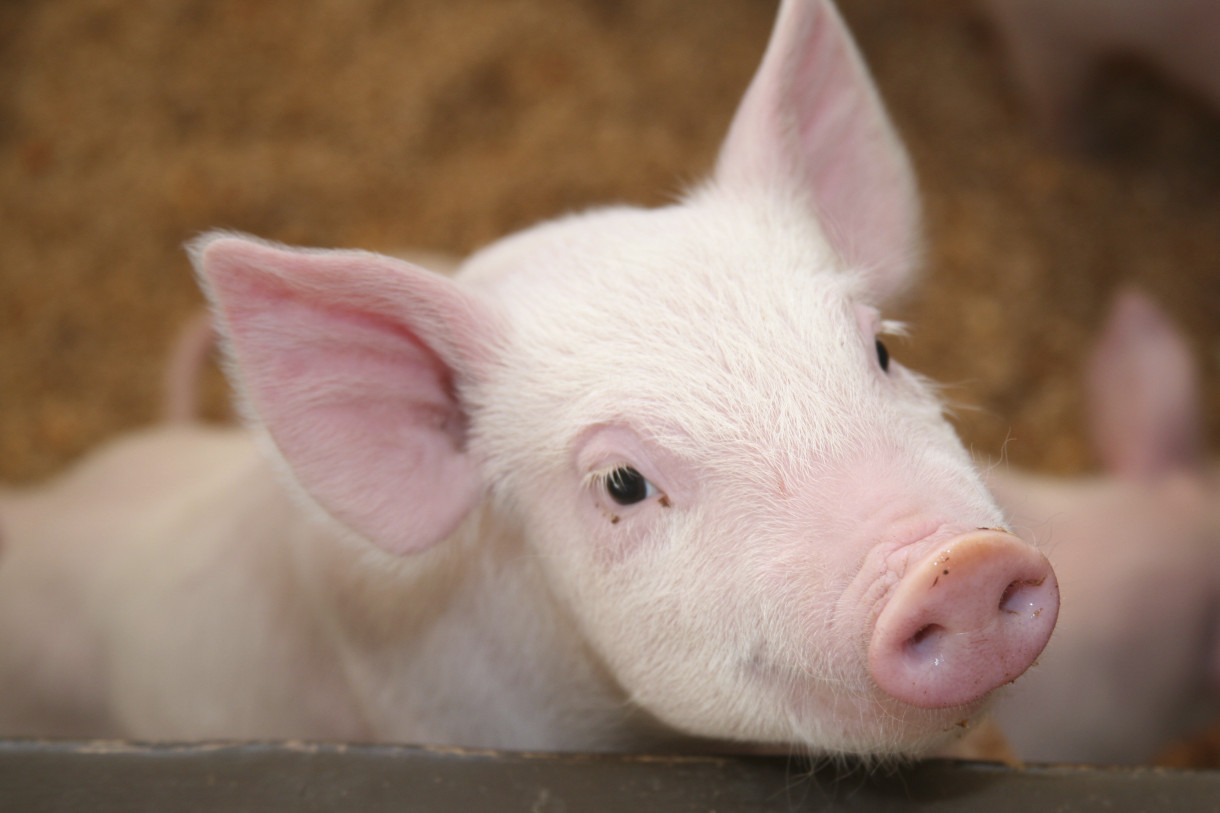
Walmart singles out the confinement of sows in gestation crates, hens in battery cages, and calves in veal crates as practices that must end. Photo by Jason Mann/iStockphoto
This morning, Walmart, one of the world’s biggest companies and the nation’s biggest food seller by a long shot announced it has adopted the "five freedoms" principles for farm animals, effectively renouncing the use of extreme confinement and other abusive practices in animal agriculture, and signaling an extraordinary change in agriculture in America. Precisely because it's Walmart, this is the most definitive statement yet that the era of confining farm animals in cages will come to an end. We applaud the company for adopting a comprehensive animal welfare policy, which comes on the heels of dozens of other declarations and pledges from other major food retailers against gestation crates, battery cages, and tail docking of dairy cows.
Walmart is calling on its suppliers to, among other actions, work toward ensuring that animals: 1) are raised in ways that allow them to engage in natural behaviors, including having sufficient space and socialization with other members of their species, 2) be provided more comfortable living conditions, 3) are free from painful mutilations 4) be spared mental discomfort or distress, and 5) be given ready access to water and feed. These changes, so grounded in common sense, would nonetheless herald major improvements over how much of agribusiness currently treats animals.
With these principles in mind, Walmart singles out the confinement of hens in battery cages, sows in gestation crates, and calves in veal crates as practices that must end. Walmart is also working with its suppliers to address the welfare issues surrounding painful mutilations like tail docking, dehorning, castration, and to move to slaughter systems that don’t cause as much pain.
This policy applies for all of Walmart's U.S. operations and includes its subsidiary Sam's Club. With the company capturing a staggering 25 percent of the grocery market, there's no greater agent of change within our country's food system.
As Walmart says, this announcement is part of its pledge to continually improve farm animal welfare. In other words: it's a first step—and like all first steps, there's room for more. For example, Walmart doesn't yet have timelines for getting animals out of cages, or for achieving its commitments on other welfare issues—something we hope to solve with the company.
Timelines aside, this announcement helps create an economy where no agribusiness company—for business reasons alone—should ever again install a new battery cage, gestation crate, or veal crate. Walmart is helping drive the transition away from immobilizing cages and other inhumane practices, and toward a more humane, more sustainable approach to production agriculture.
This is an unstoppable trend, and that was the trajectory even before Walmart made the announcement. The company's embrace of a more ethical framework for the treatment of all farm animals serves as perhaps the most powerful catalyst for change throughout animal agriculture.
We still have a long way to go not just working with Walmart during the implementation of this policy. There’s also convincing states to put basic standards in the law, the few corporations that have made no commitments to catch up, and consumers to eat more consciously. But this will be a day long remembered a remarkable inflection point in our movement and a marker in the demise of an industrial system of production that treats living creatures as little more than meat-, milk-, and egg-producing machines. We appreciate the relationship we've built with Walmart and we're eager to lend our voice as the company continues down this journey of creating a better, more humane food system.
Friday, May 22, 2015
Breaking News: Walmart , Nations Biggest Food Seller Takes Huge Step Towards Humane Treatment of Farm Animals .....
This morning, Walmart, one of the world’s biggest companies – and the nation’s biggest food seller by a long shot – announced it has adopted the “five freedoms” principles for farm animals, effectively renouncing the use of extreme confinement and other abusive practices in animal agriculture, and signaling an extraordinary change in agriculture in America. Precisely because it’s Walmart, this is the most definitive statement yet that the era of confining farm animals in cages will come to an end. We applaud the company for adopting a comprehensive animal welfare policy, which comes on the heels of dozens of other declarations and pledges from other major food retailers against gestation crates, battery cages, and tail docking of dairy cows.
Walmart is calling on its suppliers to, among other actions, work toward ensuring that animals: 1) are raised in ways that allow them to engage in natural behaviors, including having sufficient space and socialization with other members of their species, 2) be provided more comfortable living conditions, 3) are free from painful mutilations 4) be spared mental discomfort or distress, and 5) be given ready access to water and feed. These changes, so grounded in common sense, would nonetheless herald major improvements over how much of agribusiness currently treats animals.
With these principles in mind, Walmart singles out the confinement of hens in battery cages, sows in gestation crates, and calves in veal crates as practices that must end. Walmart is also working with its suppliers to address the welfare issues surrounding painful mutilations like tail docking, dehorning, castration, and to move to slaughter systems that don’t cause as much pain.
This policy applies for all of Walmart’s U.S. operations and includes its subsidiary Sam’s Club. With the company capturing a staggering 25 percent of the grocery market, there’s no greater agent of change within our country’s food system.
As Walmart says, this announcement is part of its pledge to continually improve farm animal welfare. In other words: it’s a first step—and like all first steps, there’s room for more. For example, Walmart doesn’t yet have timelines for getting animals out of cages, or for achieving its commitments on other welfare issues—something we hope to solve with the company.
Timelines aside, this announcement helps create an economy where no agribusiness company—for business reasons alone—should ever again install a new battery cage, gestation crate, or veal crate. Walmart is helping drive the transition away from immobilizing cages and other inhumane practices, and toward a more humane, more sustainable approach to production agriculture.
This is an unstoppable trend, and that was the trajectory even before Walmart made the announcement. The company’s embrace of a more ethical framework for the treatment of all farm animals serves as perhaps the most powerful catalyst for change throughout animal agriculture.
We still have a long way to go – not just working with Walmart during the implementation of this policy. There’s also convincing states to put basic standards in the law, the few corporations that have made no commitments to catch up, and consumers to eat more consciously. But this will be a day long remembered – a remarkable inflection point in our movement and a marker in the demise of an industrial system of production that treats living creatures as little more than meat-, milk-, and egg-producing machines. We appreciate the relationship we’ve built with Walmart and we’re eager to lend our voice as the company continues down this journey of creating a better, more humane food system.
Subscribe to:
Posts (Atom)



